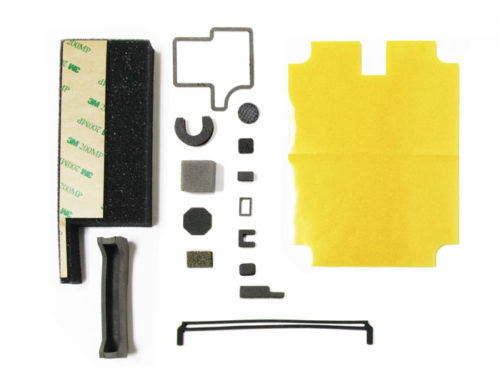 Types of Foam Materials
Types of Foam Materials
There are two primary types of polyurethane spray foams available in today’s marketplace. They are known as open cell foam and closed cell foam. These foams differ in densities and other aspects that can be beneficial or detrimental in each application.
Request a quote for foam gaskets and components for your project. Or, contact Fabri-Tech to learn how we can use our foam fabrication techniques to improve your product.
Each of our foam materials has unique performance characteristics, making each suitable for numerous applications. Some of the foam materials that we carry, include:
Closed Cell Foam
Closed cell foam is a denser and more common type of polyether foam. Closed cell foams have higher R-values than other types of foams and feature better insulation because of its very high resistance. Closed cell EMI foam are also more resistant to water degradation or penetration, which includes moisture build-up. Moisture can eventually attract bacterial growth, promoting mold, which can eat away at wood and compromise structural integrity. Preventing moisture migration can help to curb mold growth.
This type of foam has numerous beneficial qualities, including:
- Air insulation
- Preventing drafts
- Regulating temperatures
- Prevents mold growth
Closed cell foam also prevents mold growth due to its temperature control capabilities, which can cut down on humidity, which spawns mold. To maintain their resistance, closed cell foams are usually dense and strong, and resemble solids when they fully form. This strength not only helps to insulate buildings and appliances but can also strengthen walls to which it is applied.
Open Cell Foam
Open cell foam sprays expand once applied, allowing them to be installed in hard to reach, out of the way nooks and crannies. This includes wall and ceiling cavities that can be difficult to seal with closed cell foams. The expansion feature will hermetically seal the area and provide proper insulation. However, the R-value of open cell polyurethane spray foam is lower, in the 3.6 to 3.8 per inch range. This means its heat resistance level is lower, which can cause insulation failures in extreme temperatures.
Some of the main benefits of open cell EMI foam, include:
- Provides good insulation
- Lower overall cost
- High strength
Another positive attribute of open cell polyurethane foam is its cost. Because of its disadvantages compared to closed cell foam spray, it is more affordable. This can be a great advantage when an application does not require airtight seals and hermetic moisture prevention.
Polyether Foam
Polyether foam is a flexible, open-cell type of polyurethane foam that has a near-infinite amount of applications due to its phenomenal characteristics, some of which include:
- Low thermal conductivity
- Low water vapor transmission
- Mildew-resistance
- Resiliency
- Sound absorption
- Vibration dampening
- Low thermal conductivity
- Low water vapor transmission
- Mildew-resistance
- Resiliency
- Sound absorption
- Vibration dampening
Polyester Foam
Polyester is an effective low-voltage insulating material that is used to create custom insulation for electronic devices. Polyester foam is also easy to print on and readily bonds to most adhesives. Because of this, Fabri-Tech also uses polyester to create labels for our customers’ products. It is also useful for decorative purposes. Some of the benefits associated with polyester foam, include:
- Low flammability
- High water resistance
- Easy to fabricate
EMI Foam
EMI foam (electromagnetic interference) is primarily used in applications where electromagnetic waves need to be contained. Conductive foam has been designed to control the electromagnetic radiations emitted from low-cycling applications like input/output shielding or rectangular strips, which are meant for EMI foam gaskets. EMI foam strengthens the shielding effectiveness without affecting the functionalities of the product. Some of the applications that EMI foam is used for, include:
- Ships
- Tactical shelters
- Fixed site shelters
- Mobile phones
- Foam gaskets
- Cable trays
- And more
Low Density Foam Applications
Fabri-Tech uses a variety of foam materials in our converting processes, including polyether foam, polyester foam, medical foam, and more. These materials offer several advantages when used in our customers’ end products. These foams can be used for a wide range of applications, including:
- Foam gaskets
- Impart dielectric or thermal insulation
- Seal fabrication
- Medical foam applications
- And more
Contact Fabri-Tech Today
Fabri-Tech’s team will work with you to select the right foam material for your project. No matter what your design requires, we have the converting capabilities to precision manufacture parts that will exactly match your specifications. There are essentially no limits to what we can create for our customers.
Contact us today for more information on our open cell foam and closed cell foam capabilities, or request a quote today.

